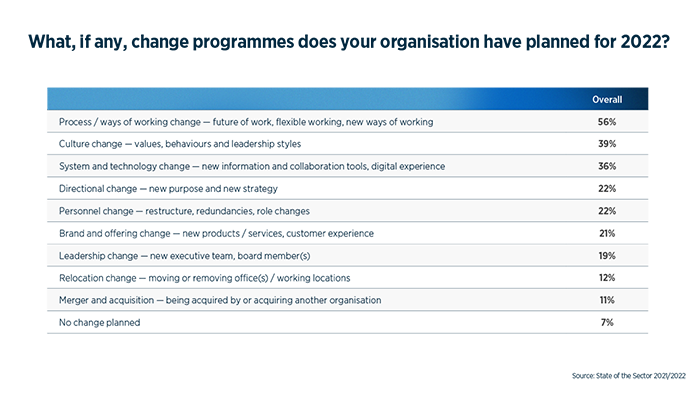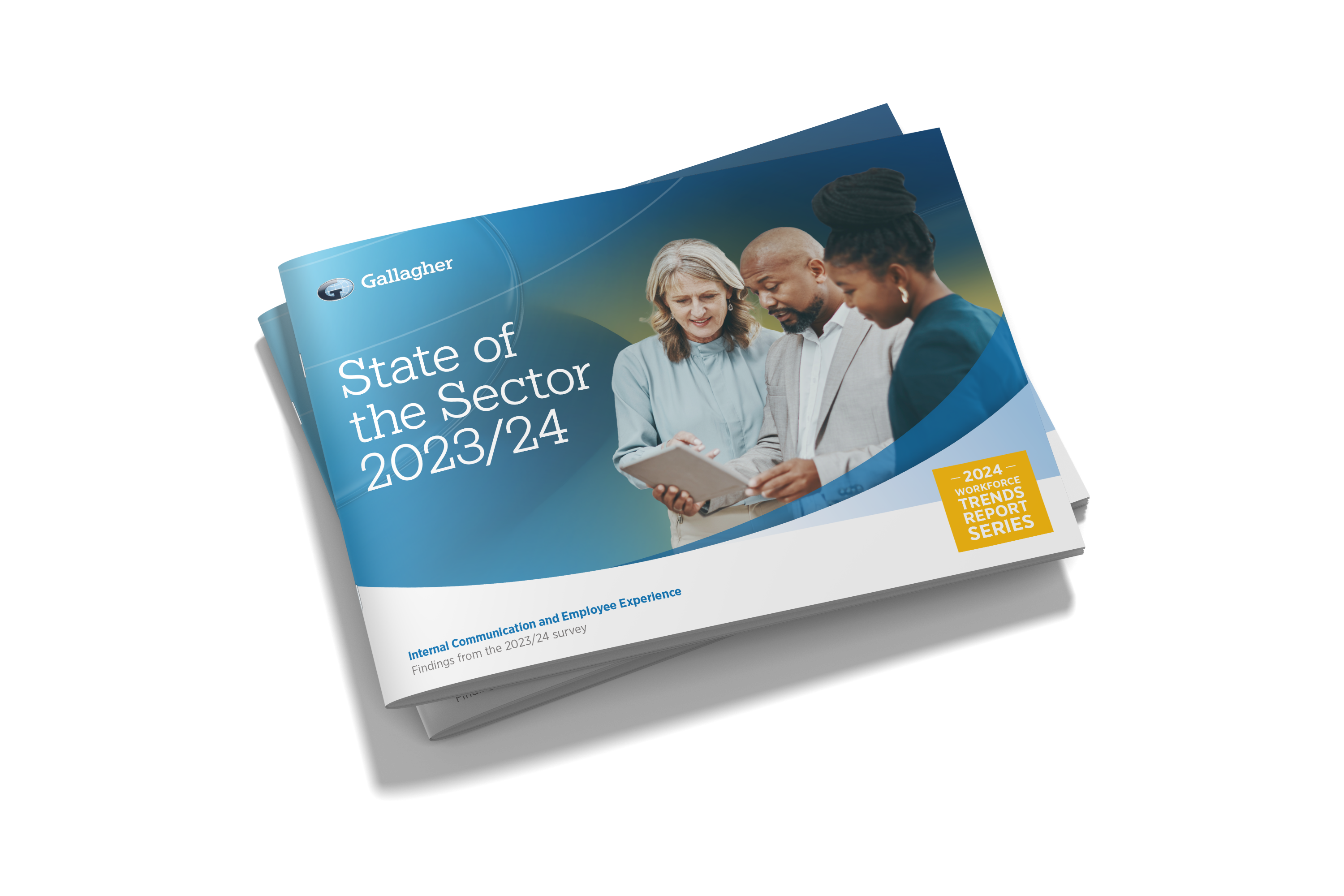In 2020, many organizations had to pivot to remote working almost overnight and reacted by rolling out a few quick wins – activating that ‘we’ll get to it tomorrow’ Teams account that was already part of their existing Office 365 package and swallowing the fact that they ‘just’ had to trust their employees to work unsupervised from home, to name just two.
But, two years on, how is this approach really working? Have organizations started to take a longer-term view on this? And are they now asking themselves if that knee-jerk internal communication strategy that got them through the pandemic is still fit for purpose in an almost fully engrained hybrid working world?
Not just 9-5…
Unsurprisingly, the subject of hybrid working was one of the hot topics in this year’s State of the Sector report. Let’s face it, for decades internal communication was primarily designed for office-based people working 9-5 – even in organizations with large proportions of deskless employees or shift workers. The pandemic has only accelerated the need for a long overdue review of how organizations interact with all of their people, no matter where they happen to sit.
But this isn’t really about communication any more: it’s about reinventing the way people share knowledge and information; it’s about rethinking how collaboration and innovation can thrive in an increasingly digital workplace; and it’s about reconsidering how best to make two-way communications happen in an engaging way.
But that’s not just our opinion – with 56% of State of the Sector survey respondents telling us that ‘Process / ways of working’ is the single biggest area of change facing organizations right now, it’s safe to say that this is the state of the sector.

The hybrid effect
Adapting channel strategy to hybrid working was named as a top priority by around 2 in 5 survey respondents, which is encouraging, to say the least. But what is really driving this (almost) wholesale review of internal communication channels?
When asked about the ability of their current channels, 80% told us that they enable them to reach their people wherever they are based (unsurprisingly, this number drops to 69% in organizations with levels of deskless employees over 50%). The fact that, in the age of digital, a significant 1 in 5 (20%) ticked the ‘quite poor’ or ‘very poor’ box in this category simply isn’t good enough.
Elsewhere, while nearly 70% felt their channels helped their people engage with corporate content and leadership messages, support for all other statements was much lower – just over half (56%) told us that their channels are good for empowering people to share their opinions; slightly less (54%) said that they help drive collaboration within and across teams; and the fact that just 45% told us that their channels encourage innovation seems to support the widespread leadership belief that this only ‘really’ happens when people are together in a room (which could explain the less-than-voracious appetite for embedding content sharing platforms).

Sign of the times
We know the wheels are definitely in motion – but exactly how far down the line are organizations when it comes to reviewing their internal communication channels right now? Quite far, on the whole.
When it came to looking at the way organizations have reacted to the shift to hybrid working and future of work trends, just 5% of respondents didn’t know how to sum up their organizations response, suggesting that (on the whole) this topic has been a universal concern for internal communicators.
Regardless, we found that 1 in 5 internal communication teams have already completed an in-depth review of their channel strategy, and around one third (34%) are currently in the process of doing so. Pretty encouraging, when you group the proactive organizations together.
A fifth of organizations (20%) felt that their channel mix was fit for purpose and didn’t need specific adjustments. When looking closer at the data, it looks like this group was more likely to have higher proportion of desk-based employees and that they operate in the public sector, banking and finance, insurance or technology.
Globally, even though around 12% of respondents know that they should be getting a handle on this, it isn’t seen as an organizational priority at the moment; while the rest are waiting to see how the situation evolves before they adapt their strategy to fit the task at hand.

Think about the future
The pressure of living and working in the same space has led to many employees feeling like they always need to be ‘on’: available more than ever, compelled to respond more quickly and fight more fires on a daily basis – all while experiencing a serious lack of essential face-to-face time with managers and mentors.
This isn’t sustainable in the long term. We need to develop people-first communication strategies to combat this; and we need to foster forward-looking behaviors to ensure the wellbeing and work-life blend of employees is being considered as a priority.
We’re at a pivotal moment in internal communication – organizations need to make decisions on how they will engage their people in the next decade, and those who want to stay ahead will need to adjust fast.
Gallagher is a global internal communication and employee experience agency.
From transforming workplace culture to championing the physical, emotional, career and financial wellbeing of employees, everything we do is linked to a strategic business objective — and designed to elevate every aspect of the employee experience.
Our communication consultants help clients communicate their strategy and vision; turn their leaders into engaging communicators; review their internal communication channels; maximise the perceived value of their rewards and benefits packages and accelerate business transformation.
We have offices in the UK, US, Canada and Australia, but we support organizations of all sizes on a global basis.
Global employee communication and experience trends
Download State of the Sector

